
Leyland Motors Limited was a British vehicle manufacturer of lorries, buses and trolleybuses. The company diversified into car manufacturing with its acquisitions of Triumph and Rover in 1960 and 1967, respectively. It gave its name to the British Leyland Motor Corporation, formed when it merged with British Motor Holdings in 1968, to become British Leyland after being nationalised. British Leyland later changed its name to simply BL, then in 1986 to Rover Group.

Associated Equipment Company (AEC) was a British vehicle manufacturer that built buses, motorcoaches and trucks from 1912 until 1979. The name Associated Equipment Company was hardly ever used; instead it traded under the AEC and ACLO brands.

Trojan was a British automobile manufacturer producing light cars between 1914 and 1965, and light commercial vehicles for a short time.

The Medium Tactical Vehicle Replacement (MTVR) is a series of vehicles used by the U.S. Marines. The first MTVRs were delivered in late 1999. The MTVR is the equivalent of the U.S. Army’s Family of Medium Tactical Vehicles (FMTV); the Marines do not use the FMTV and the Army does not use the MTVR.
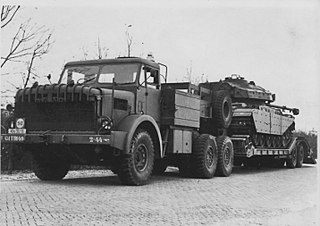
The Mighty Antar was a heavy-duty 6×4 tractor unit built by Thornycroft from the late 1940s onwards. For some decades it was the standard tank transporter of the British Army and was also used by other nations. It was powered by a shortened V8 land version of the V12 Meteor engine, derived from the Merlin and modified to run on diesel, known as the Rolls-Royce Meteorite.
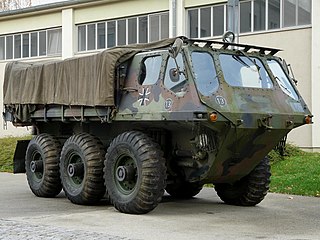
The Stalwart, formally classified by the British Army as Truck, High Mobility Load Carrier (HMLC), 5 Ton, 6 x 6, Alvis/Stalwart and informally known by servicemen as the Stolly, and by former RCT as the Stally, is a highly mobile amphibious military truck. Built by Alvis Cars between 1963 and 1971, these vehicles served with the British Army from 1964 until 1993.
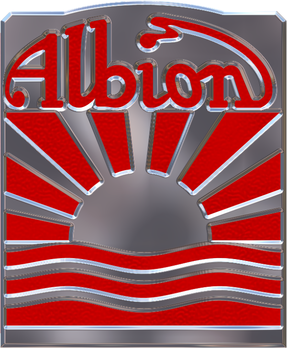
Albion Motors was a Scottish automobile and commercial vehicle manufacturer.
Scammell Lorries Limited was a British manufacturer of trucks, particularly specialist and military off-highway vehicles, between 1921 and 1988.
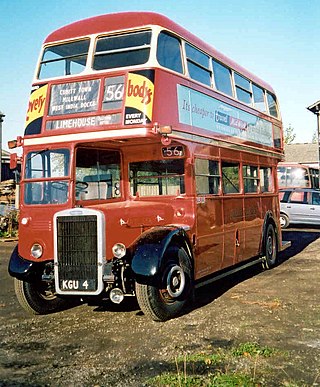
The Leyland Titan was a forward-control chassis with a front-mounted engine designed to carry double-decker bus bodywork. It was built mainly for the United Kingdom market between 1927 and 1942, and between 1945 and 1969.
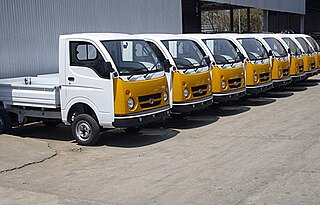
Tata Ace are models of mini trucks manufactured by Tata Motors. It was launched in 2005.

The Diamond T Company was an American automobile and truck manufacturer. They produced commercial and military trucks.

The Land Rover series I, II, and III are compact British off-road vehicles, produced by the Rover Company since 1948, and later by British Leyland. Though inspired by the World War II jeep, the Land Rover immediately distinguished itself from all other cars. From launch, it was the first mass-produced civilian four-wheel drive car with doors on it, and an available hard roof. Contrary to conventional car and truck chassis, it used a sturdier fully box-welded frame. Furthermore, due to post-war steel shortage, and aluminium surplus, Land Rovers received non-rusting aluminium alloy bodies, favouring their longevity. In 1992, Land Rover claimed that 70% of all the vehicles they had built were still in use.

The AEC Militant was a post-war development by AEC of the AEC Matador artillery tractor used during World War II. Externally the most noticeable development was the cab, which was considerably enlarged. Unlike the Matador only six-wheel versions were produced. Four-wheel versions are extant, but they are probably conversions and one is a Matador with a Mk1 Militant cab. Other changes included the fitting of a larger, 11.3-litre 6-cylinder, diesel engine and the use of a steel frame for the cab, rather than the ash (fraxinus) wood frame of the Matador. The Militant Mark 1 was produced in 6x4 and 6x6 form.

The concept of the Mechanical Horse tractor unit with an easily detached articulated trailer was conceived in the early 1930s by Napier & Son. It has one front wheel in the midline. The London and North Eastern Railway had approached Napier for an answer to the problem of replacing horses for local haulage purposes, while retaining the flexibility of changing the wagons and the maneuverability of the horse and wagon. These vehicles are often known as "Snub-nose Trucks" or "Snub-nose Lorries" because of the round hood in front of the cab.

The Leyland 4-tonne truck was produced by Leyland Trucks in Lancashire. It was developed for the British Army and won the competition to replace a fleet of older Bedford M-type 4-tonne trucks. It shares some key components with the commercial 45 Series light truck. Deliveries to the British Army started in 1990. The official British Army Out of Service Date for this truck was the end of 2014, but around 650 were retained. Small numbers were exported.

The Logistic Vehicle System Replacement (LVSR) is a family of heavy-duty military logistics vehicles of the United States Marine Corps (USMC) based on a common 5-axle ten-wheel drive (10x10) chassis. The vehicles vary in individual configuration by mission requirements, with three variants in service: a cargo, a wrecker and a tractor truck. The LVSR was designed and is manufactured by Oshkosh Defense.
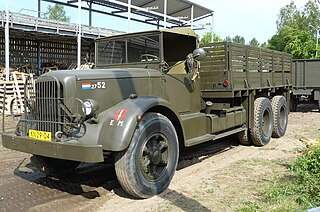
The Mack NR was a heavy 6x4 cargo truck designed and produced in the 1940s by the American manufacturer Mack Trucks. It was used mainly by the British Army to transport cargo and materiel over long distances during World War II. The official U.S. Army designation was: Truck, 10 ton, 6x4, Cargo. Its G-number was (G-528).

The Leyland Hippo was a 6x4 heavy general service cargo truck manufactured by Leyland Motors. Introduced in 1929, it remained in production for 40 years.

The SAMIL 20 is a 2-ton cargo vehicle produced in South Africa in the mid 1980's and was used as at the primary light cargo carrier of the South African Defence Force. The vehicle design is based on the German Mercedes Unimog chassis and Mark I of this vehicle was based on the Magirus Deutz 130M7FAL 4x4 engine. In Mark II, the engine was replaced with a South African license built water cooled diesel engine. The vehicle is still in use within the South African National Defence Force.

The SAMIL 50 is a 4x4 6-ton (load) truck.



















